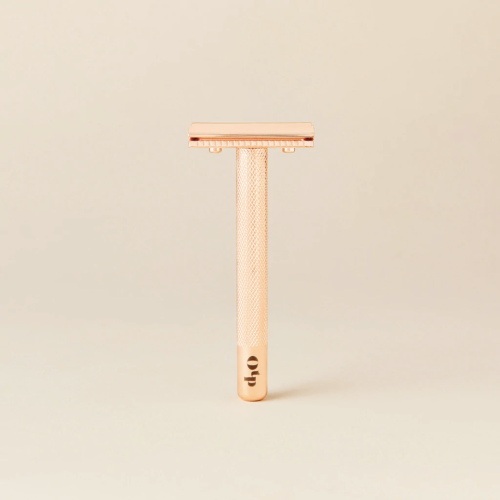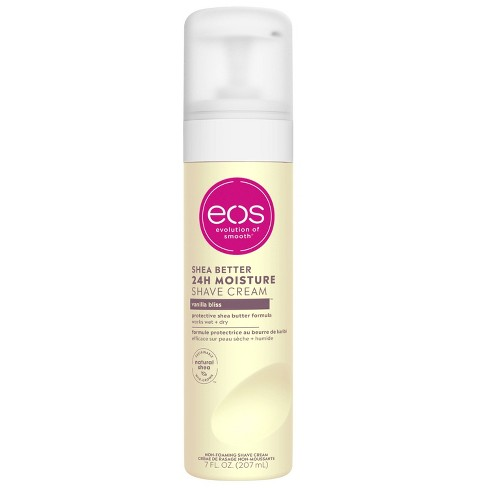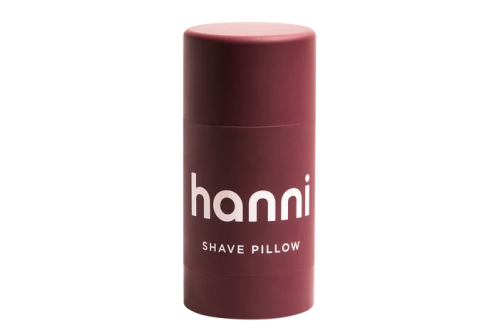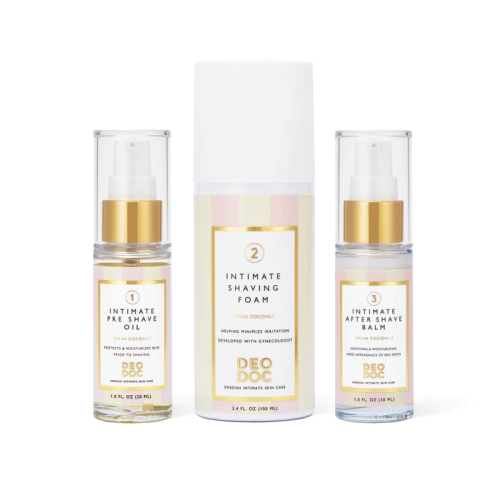Our editors independently select these products. Making a purchase through our links may earn Well+Good a commission
Whether you’re too tired to hop in the shower and use shaving cream or forgot to buy a new pack of razor heads, you’ve probably made more than a few common shaving mistakes (hate you, razor burn). And if you haven’t, well, consider yourself lucky.
Experts in This Article
co-founder of DeoDoc Intimate Skincare
Karen Young is the CEO and founder of OUI the People, a razor brand company.
Leslie Tessler is the founder of Hanni, a trendy shaving brand.
Shaving is something to approach with just as much care as any other part of your skin-care routine. There are many ways that shaving can go wrong. With that in mind, we chatted with a few shaving experts to uncover the most common mistakes you might be making when you shave. Here’s hoping that by the end of this article, you’ll be well on your way to a smooth, painless shaving experience.
The Most Common Shaving Mistakes To Avoid
1. Not prepping the area first
Just like face skin is better able to absorb products when damp, body skin takes better to shaving when the area has been prepped with warm water and steam. “It allows the hair to soften up,” says Karen Young, the CEO and founder of OUI the People.
2. Forgetting to exfoliate beforehand
If you feel like no matter how much shaving cream you use, or how sharp of a razor you shave with, you simply can’t get a close shave, dead skin cells may be to blame. According to Leslie Tessler, the founder of Hanni, a new shaving brand, dead skin cells can make removing body hair more of a challenge. “Gentle exfoliation is a great way to get rid of any dead skin cells and impurities prior to shaving and therefore supporting a super close shave,” she says. “This is also a great step to add into your routine especially if you have ingrown hairs or KP, as exfoliating helps to unclog pores and smoothes skin. Having the smoothest skin possible before shaving will help avoid nicks that can come from shaving an uneven skin surface.”
3. Applying unnecessary pressure
As much as you may want to remove your body hair, applying more pressure isn’t going to make the process go by faster—it’s actually going to make shaving even more of a time- and energy-suck in the long run. “With any razor, pushing too much on the skin causes friction and, for many, results in irritation, ingrown hairs, and razor burn,” Tessler warns.
While the type of razor you use helps make shaving easier (more on that later), Young says that less is more when it comes to pressure and hair removal. “Remember to keep a light touch when shaving because it takes longer to heal irritation than it does to change your blade,” she says.
4. Using the wrong razor
While plastic razors are most common, DeoDoc Intimate Skincare co-founder Hedieh Asadi, MD, recommends using a men’s razor, which tend to be heavier and tout sharper blades. “They provide a sharp cut on the hair so it can grow back without becoming ingrown,” she explains. “If the cut is dull, the probability of ingrown hair is higher. A good razor can also help stop post-shave irritation like razor burn.”

Hanni The Weighted Razor — $42.00
As for why the weight of your razor matters, Tessler says that it will make applying the proper pressure while shaving a no-brainer. “The issue with traditional [plastic] multi-blade razors with a head that ‘pivots’ is that pressure is needed to get a close shave,” Tessler says. “With a weighted safety razor, the weight of the handle does all of the work, resulting in a much gentler, smoother and irritation-free shave.”

OUI the People Rose Gold Sensitive Skin Razor — $75.00
5. Not using enough product to protect the skin from the blade
Even if you use the proper razor, foregoing shaving cream can lead to a world of hurt while removing body hair. With that in mind, Tessler points out the importance of always, always providing a layer of protection between the blade and the skin. “It will ensure less friction and minimize the risk of redness, razor burn, and irritation – and fewer nicks and cuts,” she says.

eos Shea Better Shave Cream - Vanilla Bliss — $4.00
6. Shaving on dry skin in a hurry
To reiterate, it is never, ever a good idea to shave without some sort of shaving cream. While some razors, like the Venus Radiant Skin Pearl Powder Razor Starter Kit, come with a built-in conditioner, most do not. As such, Tessler reiterates the importance of providing glide to your skin before you start shaving. “I know I’ve been guilty of rushing out in a hurry, realizing I missed a spot, and hastily shaving either on completely dry skin or with soap (which can be a disaster to rinse off when you’re fully dressed),” she admits. “Obviously this can result in extreme razor burn and irritation. That’s the reason we created the shave pillow. Now we can have an incredibly smooth, hydrated, and irritation-free shave out of the shower—without needing to rinse off.”

Hanni Shave Pillow — $24.00
7. Only shaving in one direction
While we’ve long been told to shave with the grain, Young points out that most people have hair that grows in all directions—especially in the bikini area. “Try shaving up, out, in, or a combination of all three in those areas in particular,” she recommends. “Your skin is also more sensitive in the bikini area so holding the skin form while you shave will help you get a closer shave in fewer passes.”
That said, another potential mistake is shaving too many times in too many directions. As such, if you find that you’re experiencing more ingrown hairs and irritation by going in multiple directions, Dr. Asadi recommends only going against the grain once.
8. Not switching out blades/cartridges often enough
More than likely, we’re all guilty of using an old razor once or twice in our lives. That said, it should be avoided at all costs. “Not only are dull blades less likely to deliver a smooth shave, from a hygienic perspective it’s an absolute nightmare, especially with plastic cartridges,” Tessler says. “Just think about the fact that you’ve got three, four, five blades, with plastic in between, sitting in a humid environment for long periods of time… We’ve spoken with many gynecologists who often see bacterial infections as a result. Thankfully, using a single blade avoids many of those risks and is also much less expensive (and better for the environment) than the bulky cartridges, so you can switch them out frequently without feeling guilty. Our recommendation is to switch your blades every two weeks for optimal performance.”
9. Not caring for your blade
How you care for your razor in between blade swaps matters, too. “Washing a razor clean of shaving products and hair after shaving helps the blade to stay sharp and hygienic,” Tessler says. “Leaving residue on the blade can lead to rust or build up that could result in skin irritation and cuts.”
10. Neglecting your post-shave routine
While you might think that you’re in the clear once you finish shaving and find no nicks in your razor’s wake, Dr. Asadi says otherwise. “The area must be properly hydrated and taken care of for several days after shaving,” she says.

DeoDoc After Shave Balm — $25.00
“Exfoliation is also a great method if you want to prevent an ingrown after shaving, in addition to a proper shaving routine, it is also important to gently exfoliate the area every day for one to five days post-shave to continuously remove dead skin cells and allow the hair to grow out easily and without barrier.”
The Takeaway
If you enjoy shaving, it’s important to put in the TLC to do so properly. “Shaving is a trauma to the skin, so when not properly taken care of, it may cause irritation like ingrown hairs, razor burn, and itching—especially on highly sensitive vulvar skin,” says Dr. Asadi.

DeoDoc Shaving Kit — $65.00
Oh hi! You look like someone who loves free workouts, discounts for cutting-edge wellness brands, and exclusive Well+Good content. Sign up for Well+, our online community of wellness insiders, and unlock your rewards instantly.
Sign up for the Well+Good SHOP Newsletter
Get exclusive deals on wellness, beauty, fitness, and food products that have been hand-picked by our editors.
Got it, you've been added to our email list.











